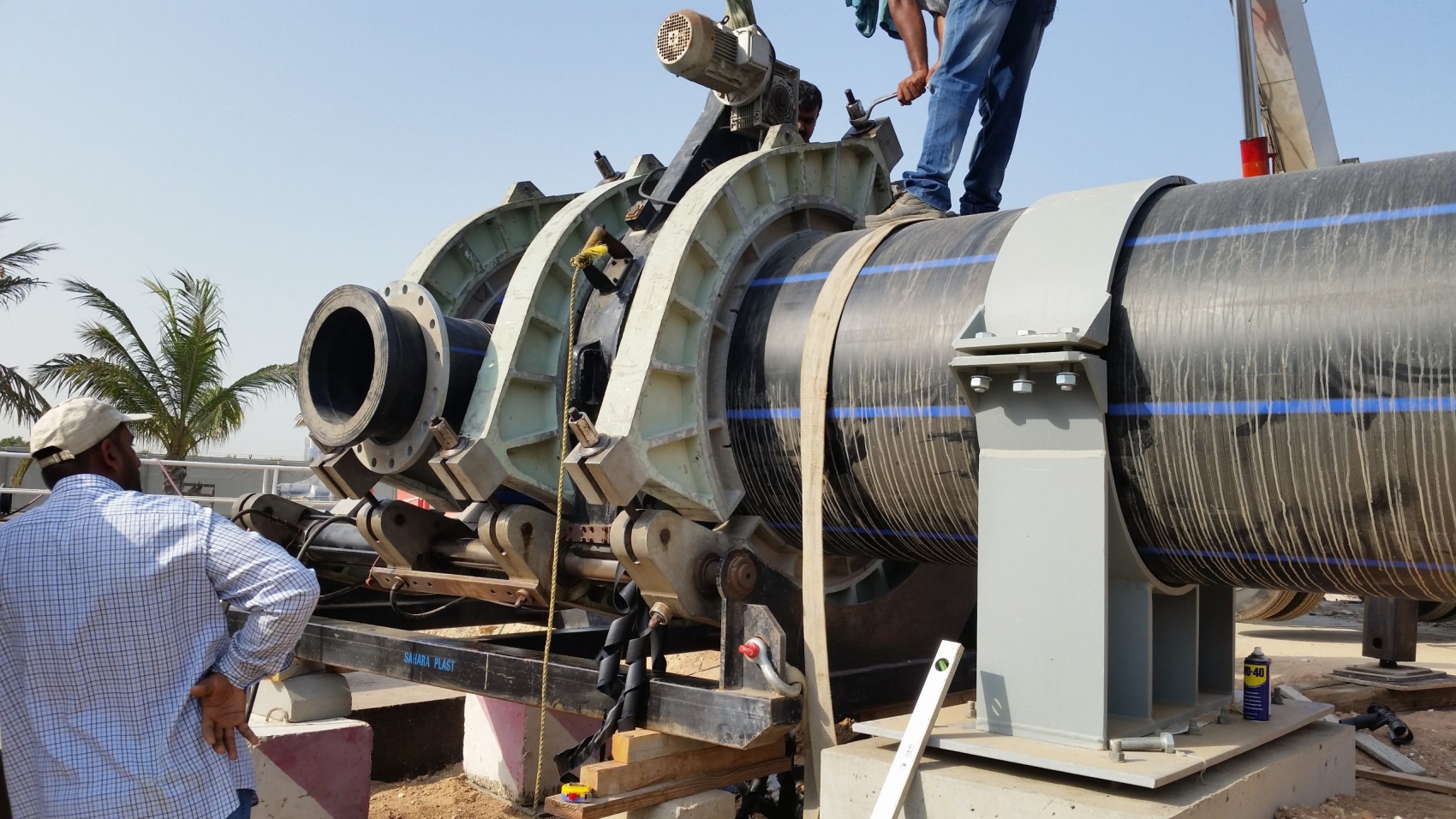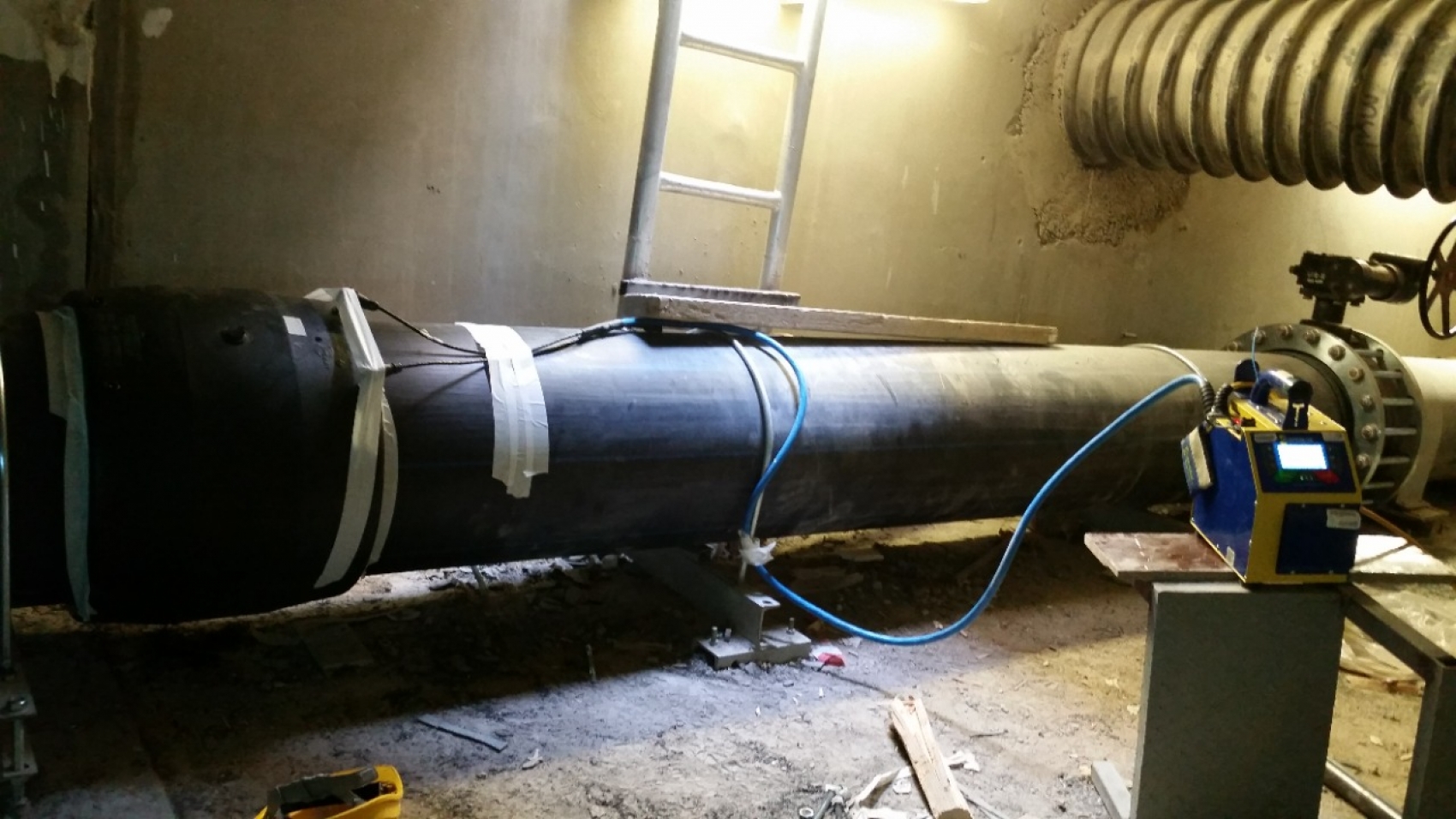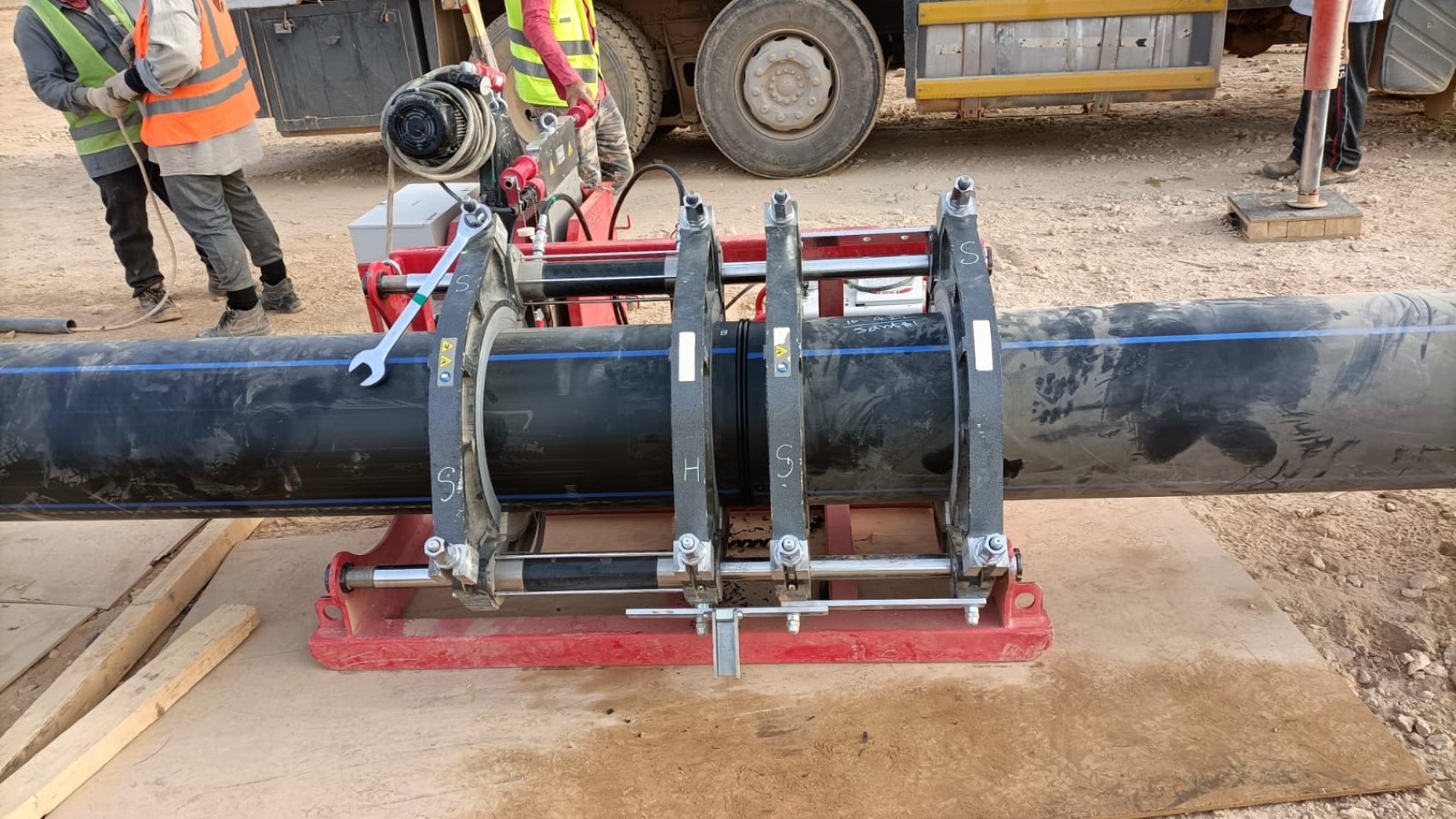Butt fusion is a Thermo fusion process that involves the simultaneous heating of the ends of two pipe/fitting components which are to be joined until a molten state is attained on each contact surface. The two surfaces are then brought together under controlled pressure for a specific cooling time and a homogenous fusion joint is formed. The resultant joint is fully resistant to end loads and has comparable performance under pressure to the pipe itself.
An electrical heater plate is used to raise the temperature of the pipe ends to the required fusion temperature. Butt-fusion can be used to join both PE80 and PE100 materials for the pipe sizes of 90mm and above of the same SDR.
The butt welding machines used to weld PE pipes have controls to ensure the welding parameters are strictly adhered to. The following parameters are controlled:
- heater plate temperature
- ovality and alignment
- interface pressure
- bead width
- heat soak time
- changeover time
Control of these is necessary to ensure the premature failure of the weld does not occur. The field conditions under which PE pipe is welded have a considerable effect on the strength of the joint. In order to achieve an acceptable weld three elements are essential:
- Cleanliness: because contamination will ruin joints
- Technique: Most owners of PE pipe systems require that people performing butt welding of PE pipes are qualified by completing a recognized training course.
- Correctly designed equipment with proper maintenance: Correct welding temperatures, welding procedures, and pipe-facing tools must be maintained intolerance and in good condition.
The resulting joint, if it has been properly made, is as strong as the original pipe and can withstand all the loads applied during routine installation and operation.
During the fusion process internal and external ‘weld beads’ are formed. Techniques have been developed to minimize the size of the beads, however, as they do not add anything to the overall strength they may be safely removed if required. The removed weld beads can be inspected as part of a quality control program.




